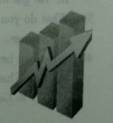
“What is success?” Mr Gruber asked his 6
th grade business class. It was his opening conversation for the first class of the term.
“Success is riding in a sweet car, watching an 80-inch TV, and living in a place with at least twelve rooms.” One student answered, earning laughs from all the students.
Mr Gruber smiled, but shook his head. “Tom, that is excess(过量). That is not success.”
“How about being able to provide for your family?” A blonde girl named Sandy in the front suggested as an answer.
“Now we’re getting closer,” Mr Gruber smiled, “but try thinking about what you need and what you want.”
“Getting everything you want.” Tom shouted out an answer again, trying for more laughs.
Mr Gruber sighed. “ I believe we’ve already talked about excess versus(与…比较) success.”
“Getting everything you need, but some of what you want?” James, sitting in the back wondered aloud.
“Quite right!” Mr Gruber clapped. “Success is getting everything you need and some of what you want. The more you get that you want, the more successful you are. You do reach a point where you are living in excess, though.”
“What does this have to do with business?” Tom asked. It seemed if it wasn’t funny, he wasn’t happy.
“Well, Tom, think of it this way: the point of business is to make a living to support your family. Once you have properly seen to (确保) their needs, you can then see to getting the extras that you want.”
“What if I don’t have a family?” he continued to be difficult.
“Then you have to provide for yourself, a family of one.”
“He has goldfish to think about!” Peter, Tom’s friend, shouted out.
“Then he needs to provide for a family of one with a fishbowl.” Mr. Gruber corrected himself.
Tom nodded, satisfied with that answer.
“So in the next nine weeks, we’re going to study basic business situations, like having a checking account and understanding credit cards.”
Tom rubbed his hands together excitedly. “When do we get to start spending?”
“You already are, Tom. You’re spending time with us!” Mr. Gruber laughed. “Now, let’s see what you guys know about credit cards…”
小题1:What class did Mr Gruber teach?
| A.History | B.Science | C.Maths | D.Business |
小题2:Which student didn’t seem to be taking the class seriously?
| A.Tom | B.James | C.Peter | D.Sandy |
小题3:How did Mr Gruber make his class lively and interesting?
| A.He himself kept talking’ |
| B.He just read from a textbook. |
| C.He showed a movie to his students. |
| D.He got his students to take part in a discussion. |
小题4:What do you think of Mr Gruber according to the passage?
| A.Strange | B.Patient | C.Shy | D.Proud |
小题5:What can be the best title of this passage?
| A.Get What You Want | B.Needs and Wants |
| C.Try to Get More Money | D.How to Live Well |